There have been several
the cephalium in cacti
- iann
- BCSS Member
- Posts: 14565
- https://www.behance.net/kuchnie-warszawa
- Joined: 11 Jan 2007
- Branch: MACCLESFIELD & EAST CHESHIRE
- Country: UK
- Role within the BCSS: Member
Re: the cephalium in cacti
[quote]Have you ever thought of writing an article for Cactus World? [/quote]
There have been several Most recently on Fraileas.
Most recently on Fraileas.
There have been several
Cheshire, UK
- Tina
- BCSS Member
- Posts: 7053
- Joined: 11 Jan 2007
- Branch: NORTHAMPTON & MILTON KEYNES
- Country: England
- Role within the BCSS: Member
- Location: BUCKINGHAMSHIRE
Re: the cephalium in cacti
Also Marlon is one of two speakers at the zone 6 convention, which will be held 23rd Feb 2008 and will be giving 2 talks, "The Cacti of Eastern Brazil"& "The Cacti of the Pampas".
Tickets will be on sale soon & to find further information please look at the 2008 events page.
http://www.bcss.org.uk/events.html
Tickets will be on sale soon & to find further information please look at the 2008 events page.
http://www.bcss.org.uk/events.html
Tina
varied collection of succulents and cacti but I especially like Euphorbia's, Ariocarpus and variegated agaves.
Bucks, UK
Branch co-ordinator, Northants & MK BCSS https://northants.bcss.org.uk
BCSS Talk team member, contact me- BCSS.Talk@Gmail.com if you want to volunteer or suggest a speaker plz.
varied collection of succulents and cacti but I especially like Euphorbia's, Ariocarpus and variegated agaves.
Bucks, UK
Branch co-ordinator, Northants & MK BCSS https://northants.bcss.org.uk
BCSS Talk team member, contact me- BCSS.Talk@Gmail.com if you want to volunteer or suggest a speaker plz.
-
Marlon Machado
- Registered Guest
- Posts: 2391
- Joined: 16 Oct 2007
Re: the cephalium in cacti
Hi Stuart,The illustration of Stephanocereus luetzelburgii in the New Cactus Lexicon makes it look as though the adult growth is just a narrowed form of the younger growth, is that so? Does it actually constitute a cephalium in that case?
Stephanocereus luetzelburgii is a fascinating plant. Young plants have thick stems, and areoles with a few short, strong spines. However, when it reaches maturity the stem becomes thinner, the areoles are produced more closely spaced, and the areoles start to develop lots of wool and more lengthier, bristly spines. The areoles in the juvenile portion of the body are incapable of flowering, while the areoles produced by the mature stem are capable of flowering.
This marked phase change from juvenile to adult characteristics is very similar to what occurs in cacti that produces apical cephalia, like Melocactus and Discocactus, and the mature region of the stem of Stephanocereus luetzelburgii could be considered a cephalium-like structure. However, there are differences: in the cephalium of Melocactus or Discocactus, the areoles are much more closely spaced, so densely crowded that there is little space left between the areoles; also, plant of these genera lose the structure of ribs, and the cephalium is composed of spirals of indistinct tubercles upon which are the areoles. The epidermis of the cephalium does not have chlorophyll, and is quickly converted to bark.
Stephanocereus luetzelburgii differs in that it does not lose the structure of the ribs (the ribs may increase in number, but are still there) and although the areoles of the mature portion of the stem are more closely spaced, there is still space between the areoles (and between the ribs) and the epidermis is green, with chlorophyll.
There have been speculations as if the mature region of the stem in Stephanocereus luetzelburgii is homologous to the cephalium of Melocactus or Arrojadoa, that is, if they have the same evolutionary origin, or if these structures are merely analogous to each other (similar in function but having not the same evolutionary origin).
My studies on the relationships of the genera of the tribe Cereeae have shown that Stephanocereus luetzelburgii is the oldest lineage in the Arrojadoa clade (which is composed by Arrojadoa, Pierrebraunia bahiensis, Stephanocereus leucostele and Stephanocereus luetzelburgii), and this Arrojadoa clade is sister to the Melocactus clade (composed of Melocactus, Discocactus and Coleocephalocereus). Thus, the mature region of the stem in Stephanocereus luetzelburgii appears to be homologous to the cephalium of Melocactus and Discocactus, and could be regarded as a kind of proto-cephalium, a step in the direction of producing true apical cephalia.
True apical cephalia occurs in both Melocactus and Arrojadoa, the last differing from the former only because it can resume the production of vegetative growth - new stems - after it has produced a cephalium, hence the rings of cephalia in Arrojadoa. The mature region of the stem in Stephanocereus luetzelburgii could be a primitive version of the cephalium that later evolved in Melocactus, Discocactus, Arrojadoa and Stephanocereus leucostele. However, more detailed studies of the anatomy and morphogenesis (the differentiation and growth of tissues) in these species are necessary to better understand the similarities and differences among the several forms of cephalia in these cacti.
Below are some pictures of Stephanocereus luetzelburgii:
Young plant, just developing the mature portion of the stem:
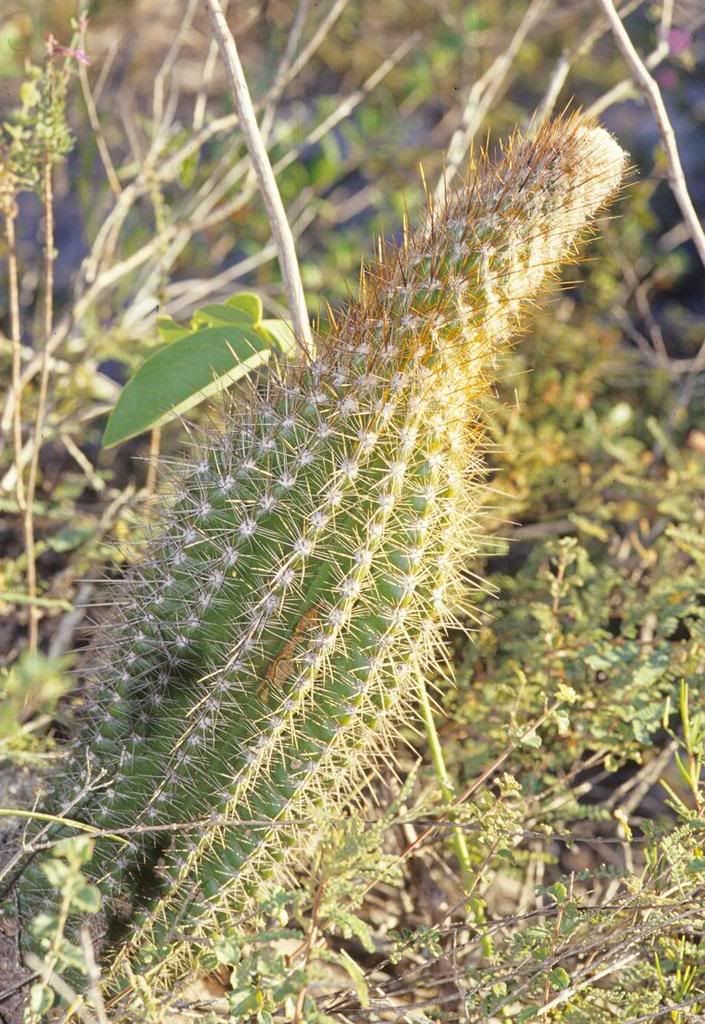
Photo: Marlon Machado.

Photo: Marlon Machado.
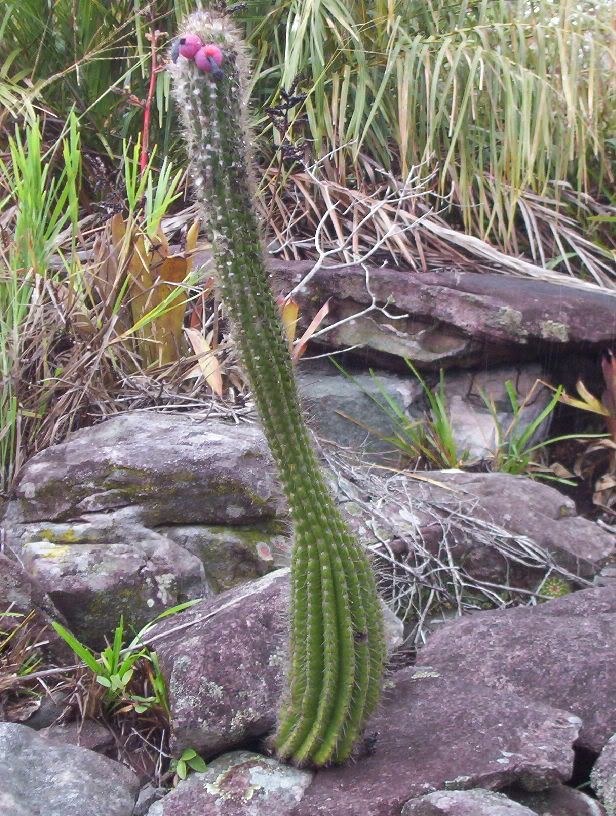
Photo: Marlon Machado.
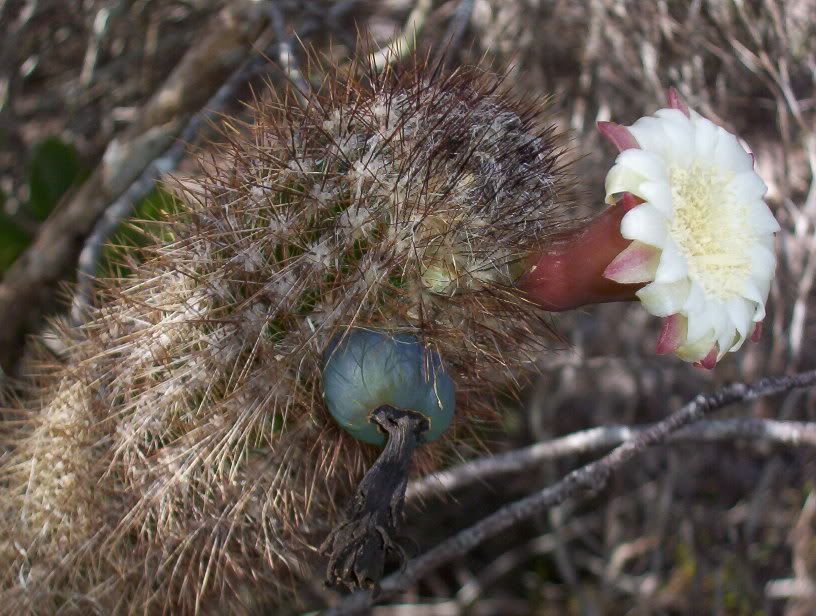
Photo: Marlon Machado.
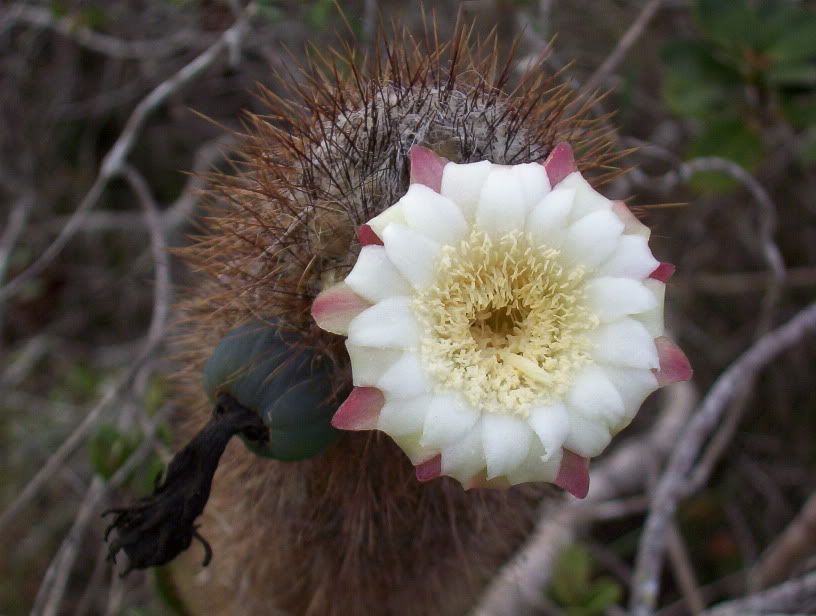
Photo: Marlon Machado.

Photo: Marlon Machado.
Marlon Machado.
Institute for Systematic Botany, University of Zurich, Zollikerstrasse 107, CH-8008 Zurich, Switzerland.
Institute for Systematic Botany, University of Zurich, Zollikerstrasse 107, CH-8008 Zurich, Switzerland.
-
Marlon Machado
- Registered Guest
- Posts: 2391
- Joined: 16 Oct 2007
Re: the cephalium in cacti
[quote]I loved the cactus with the elongated areoles,showing an evolutionary stepping stone towards cephalia[/quote]
Hi Larry,
Actually the areoles of Neoraimondia, although cephalium-like, are quite distinct from a normal cephalia and unlike anything else. They are not stepping stones towards cephalia. The areoles of the cephalium in the cephalic cacti are like any other areole in that it becomes inactive after it has flowered. Areoles of the cephalium differ from areoles of the vegetative body of the same plant because they are capable of flowering, and because these areoles produce lots of wool and bristles. But once it has flowered, the areole of the cephalium becomes inactive like any other areole.
However, the areoles of Neoraimondia are different in that they are capable of growing year after year and producing flowers many times. These areoles are more like miniature branches than normal areoles, and they are similar to the cephalium of cephalic cacti, but yet distinct and quite unique.
Cheers,
Hi Larry,
Actually the areoles of Neoraimondia, although cephalium-like, are quite distinct from a normal cephalia and unlike anything else. They are not stepping stones towards cephalia. The areoles of the cephalium in the cephalic cacti are like any other areole in that it becomes inactive after it has flowered. Areoles of the cephalium differ from areoles of the vegetative body of the same plant because they are capable of flowering, and because these areoles produce lots of wool and bristles. But once it has flowered, the areole of the cephalium becomes inactive like any other areole.
However, the areoles of Neoraimondia are different in that they are capable of growing year after year and producing flowers many times. These areoles are more like miniature branches than normal areoles, and they are similar to the cephalium of cephalic cacti, but yet distinct and quite unique.
Cheers,
Marlon Machado.
Institute for Systematic Botany, University of Zurich, Zollikerstrasse 107, CH-8008 Zurich, Switzerland.
Institute for Systematic Botany, University of Zurich, Zollikerstrasse 107, CH-8008 Zurich, Switzerland.
-
Marlon Machado
- Registered Guest
- Posts: 2391
- Joined: 16 Oct 2007
Re: the cephalium in cacti
Hi Julie,A question about the lateral cephalia: Some seem to be on the sunny side and others on the shady side. Of course they could be taken at different times of the day. Is there a preferred side for cephalia? I would have guessed the sunny side.. but perhaps they would lose less water by being on the shady side.
The cephalium usually develops in the sunniest side of the plant, which in South America is northwest, while in North America is southwest. In habitat, usually all plants in a population of a cephalium-bearing species have their cephalia turned to the same direction; see examples in the pictures below:
A population of Micranthocereus purpureus in a misty afternoon, all plants with the cephalium facing the same direction, photographed at Morro do Chap?u, Bahia:

Photo: Marlon Machado.
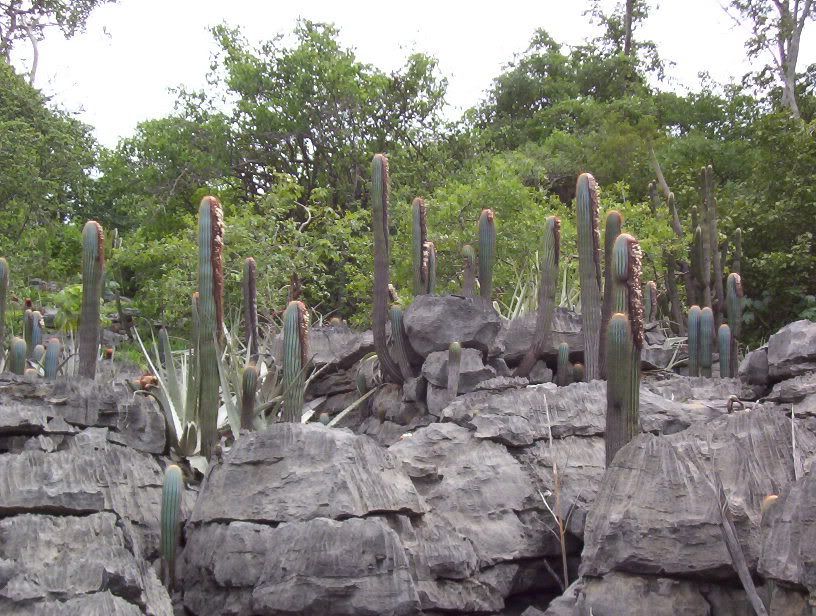
Photo: Marlon Machado.
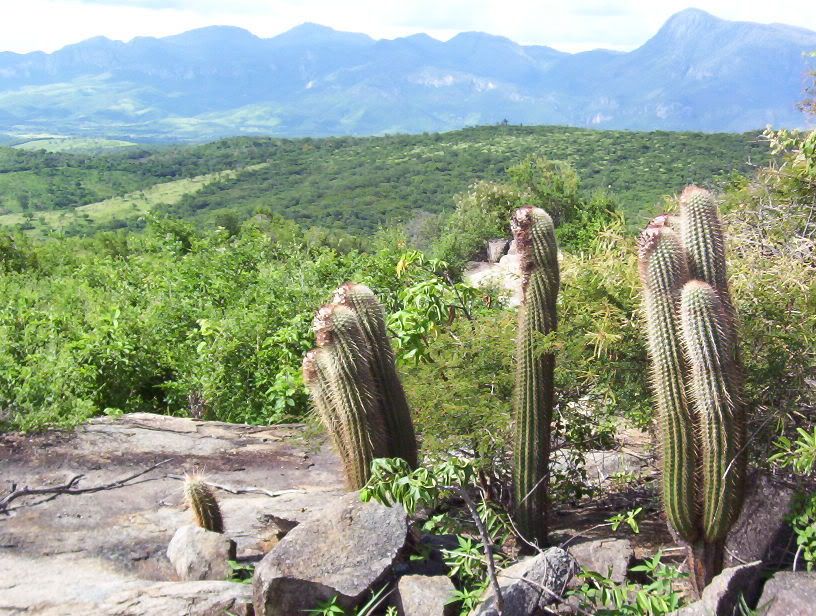
Photo: Marlon Machado.
Cheers,
Marlon Machado.
Institute for Systematic Botany, University of Zurich, Zollikerstrasse 107, CH-8008 Zurich, Switzerland.
Institute for Systematic Botany, University of Zurich, Zollikerstrasse 107, CH-8008 Zurich, Switzerland.
-
Marlon Machado
- Registered Guest
- Posts: 2391
- Joined: 16 Oct 2007
Re: the cephalium in cacti
Hi Vic,Hi Marlon,
Perhaps you could shed some light on the plant below whilst on the subject of cephalium producing cacti. I photographed it whilst in Mexico in 2005 in the state of Puebla. Looking through the NCL it appears to be a Pilosocereus but which species I'm not sure. Maybe it's not even endemic and possibly an imposter as I also saw Pachycereus pecten-aboriginum which according to the NCL is endemic to Baja California.
The plant in your picture is most definitively a Pilosocereus, and the species whose description in the NCL more closely agrees with the appearance of the plant in your picture is Pilosocereus chrysacanthus - moreover, this species occurs in Puebla.
However, the woolly parts of the stems are not a cephalium - the flowering areoles of many Pilosocereus species produce lots of wool and sometimes are all arranged in just one side of the stem, but there is no modification of the stem, and these flowering areas are not a cephalium. They are more appropriately called flowering zones. Some species can have very wooly flowering areoles, the most bizarre being those produced by Pilosocereus densiareolatus:
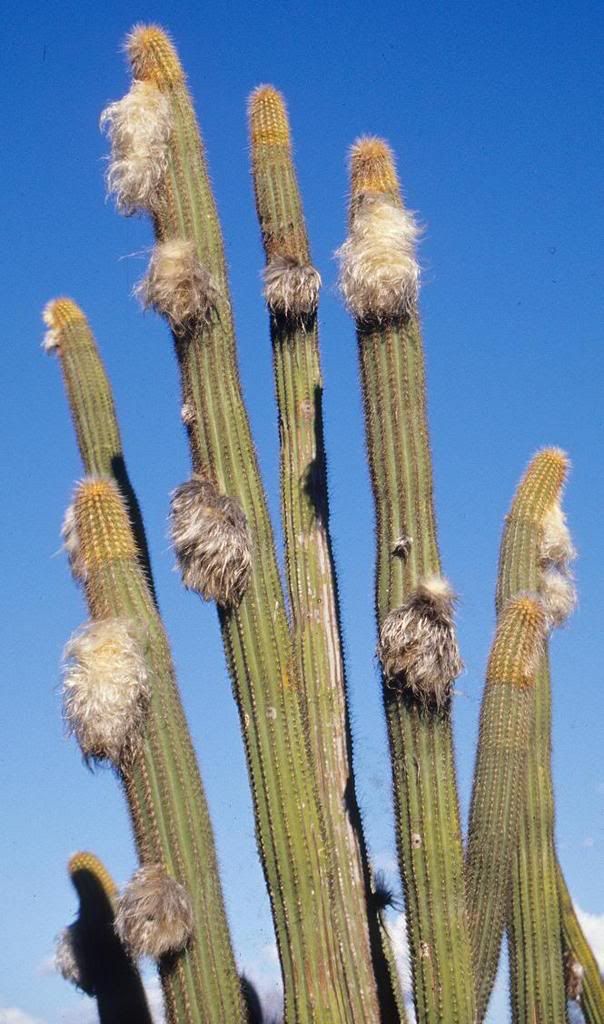
Pilosocereus densiareolatus photographed near Porto Novo, Bahia. Photo: Marlon Machado.
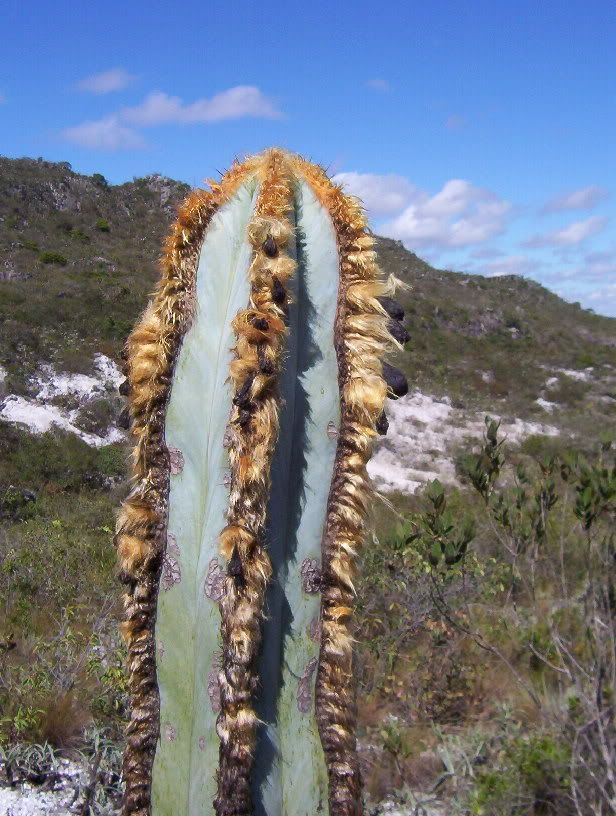
Pilosocereus fulvilanatus photographed at Gr?o Mogol, Minas Gerais. Photo: Marlon Machado.
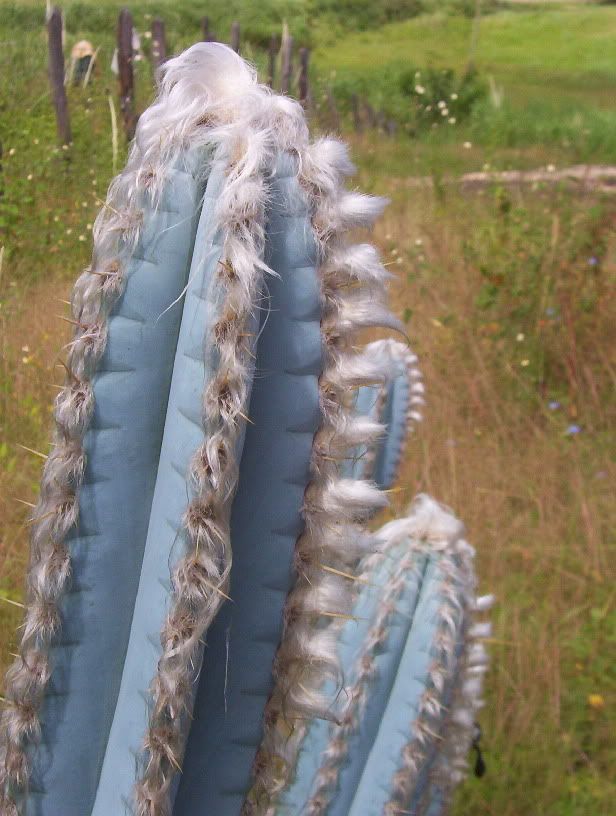
Pilosocereus pachycladus photographed at Pedra Azul, Minas Gerais. Photo: Marlon Machado.
Pilosocereus gounellei from a population that does not develop a cephalium, photographed at Morro do Chap?u, Bahia:
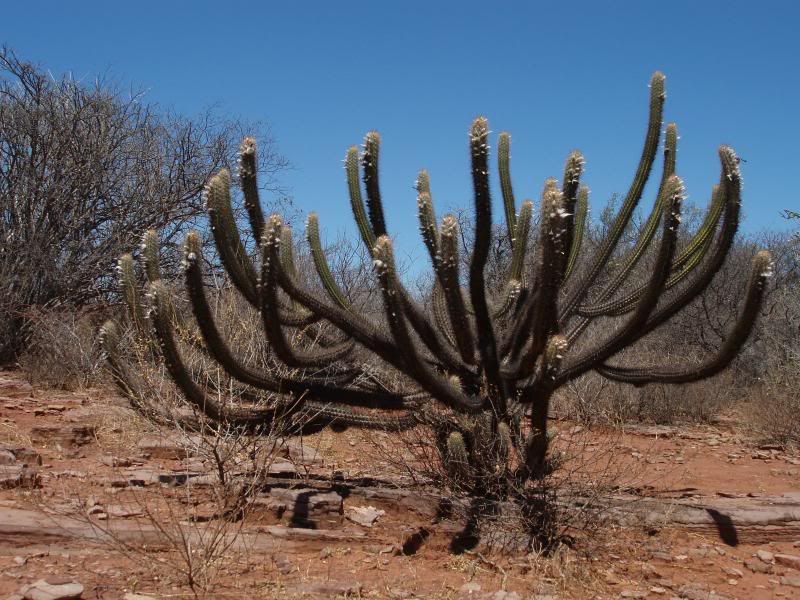
Photo: Marlon Machado.

Photo: Marlon Machado.
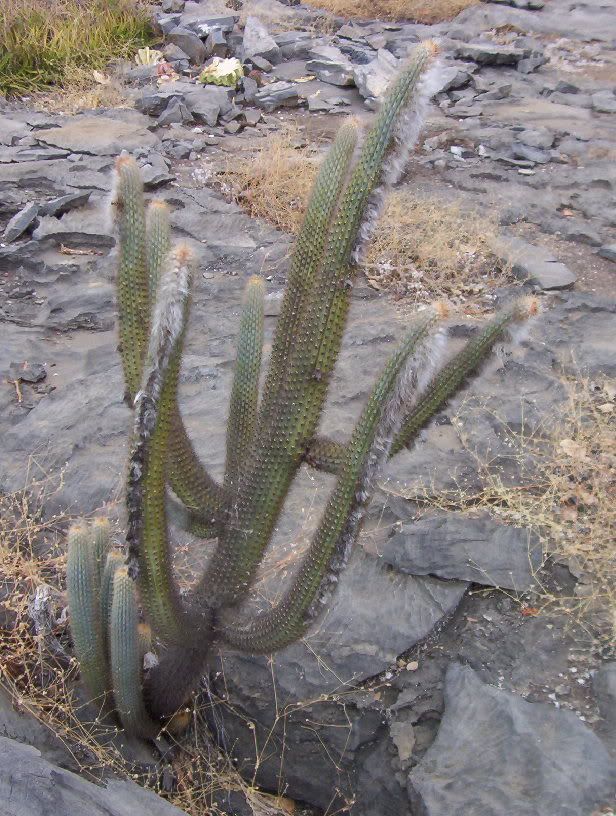
Photo: Marlon Machado.
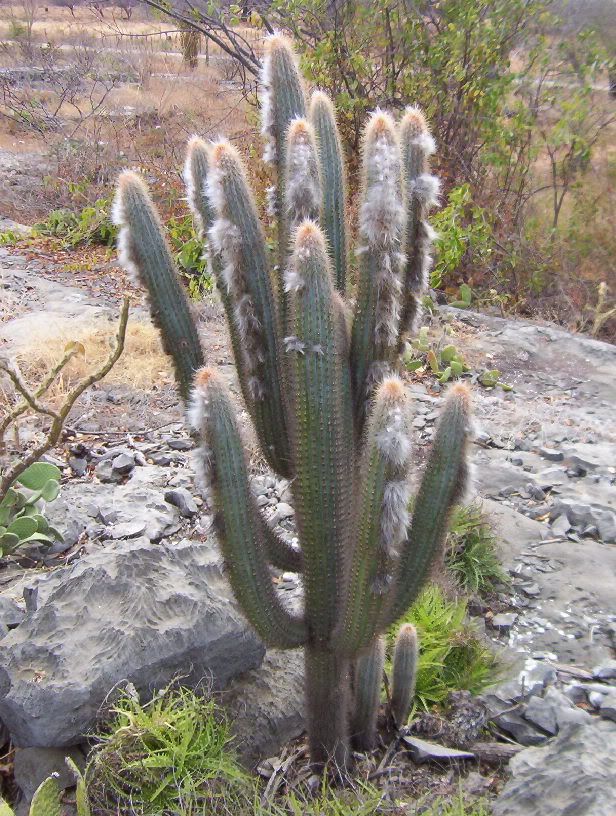
Photo: Marlon Machado.
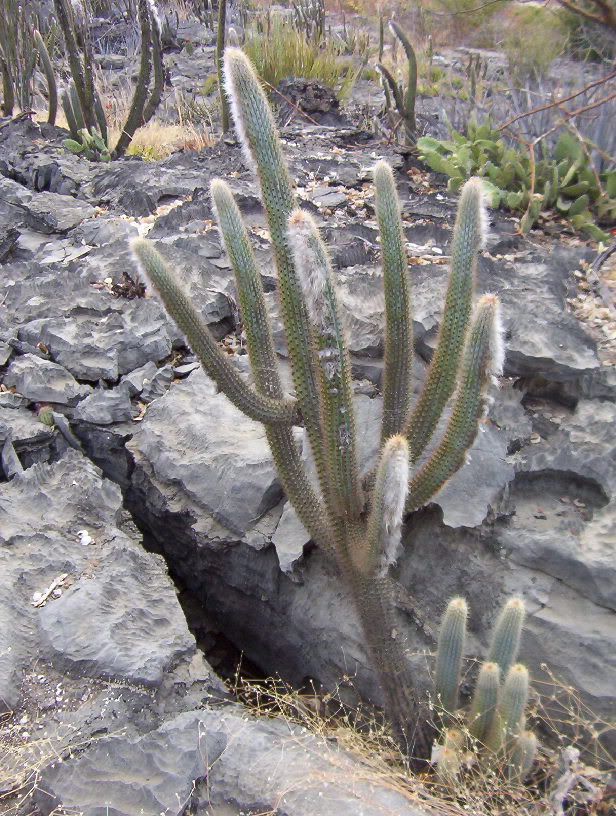
Photo: Marlon Machado.
Marlon Machado.
Institute for Systematic Botany, University of Zurich, Zollikerstrasse 107, CH-8008 Zurich, Switzerland.
Institute for Systematic Botany, University of Zurich, Zollikerstrasse 107, CH-8008 Zurich, Switzerland.
- Stuart Estell
- BCSS Member
- Posts: 2451
- Joined: 23 Jun 2007
- Branch: BRADFORD
- Country: UK
- Role within the BCSS: Member
- Location: Bournville, Birmingham
Re: the cephalium in cacti
Thanks for the explanation of Stephanocereus luetzelburgii Marlon, most enlightening. I hope you do decide to convert this thread into an article (or articles) for the journal 
-
Vic
- Registered Guest
- Posts: 5123
- Joined: 11 Jan 2007
- Branch: BRADFORD
- Country: UK
- Role within the BCSS: Seed Purchaser
- Location: Birmingham UK
Re: the cephalium in cacti
Hi Marlon,
Thanks again for the in depth explanation, great photos and id. I was wondering whether the wool was actually a cephalium as it isn't necessarily concentrated at the top of the stems as with most cephalia.
Something else that I was wondering is what if any are the advantages of the glaucous blue colouration of many of the Pilosocereus. Many are endemic too Brazil and usually require a little more heat during the winter months compared to other species. I noticed too that many of the fruit are a vivid blue colour.
Not sure about making this an article for CactusWorld, a series at least if not a book!:)
Thanks again for the in depth explanation, great photos and id. I was wondering whether the wool was actually a cephalium as it isn't necessarily concentrated at the top of the stems as with most cephalia.
Something else that I was wondering is what if any are the advantages of the glaucous blue colouration of many of the Pilosocereus. Many are endemic too Brazil and usually require a little more heat during the winter months compared to other species. I noticed too that many of the fruit are a vivid blue colour.
Not sure about making this an article for CactusWorld, a series at least if not a book!:)

- Julie
- Registered Guest
- Posts: 5984
- Joined: 11 Jan 2007
- Branch: None
- Country: UK
- Role within the BCSS: Member
- Location: North Yorkshire
Re: the cephalium in cacti
Thanks again Marlon, and for the pictures too. All in like like soldiers and with cehpalia lined up too.  It must be amazing to see the cacti in habitat, and know they got there without us coddling them, and most of them are probably older than our grannies.
It must be amazing to see the cacti in habitat, and know they got there without us coddling them, and most of them are probably older than our grannies.
I'd like to read your article on cephalia, and I bet the members without internet access would too.
(I'm a newbie to BCSS)
I'd like to read your article on cephalia, and I bet the members without internet access would too.
(I'm a newbie to BCSS)
Happy carrier of Forby Disorder - an obsession with Euphorbia obesa.
NB. Anyone failing to provide a sensible name for me to address them will be called, or referred to, as Fred.
NB. Anyone failing to provide a sensible name for me to address them will be called, or referred to, as Fred.
